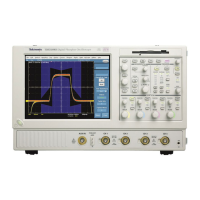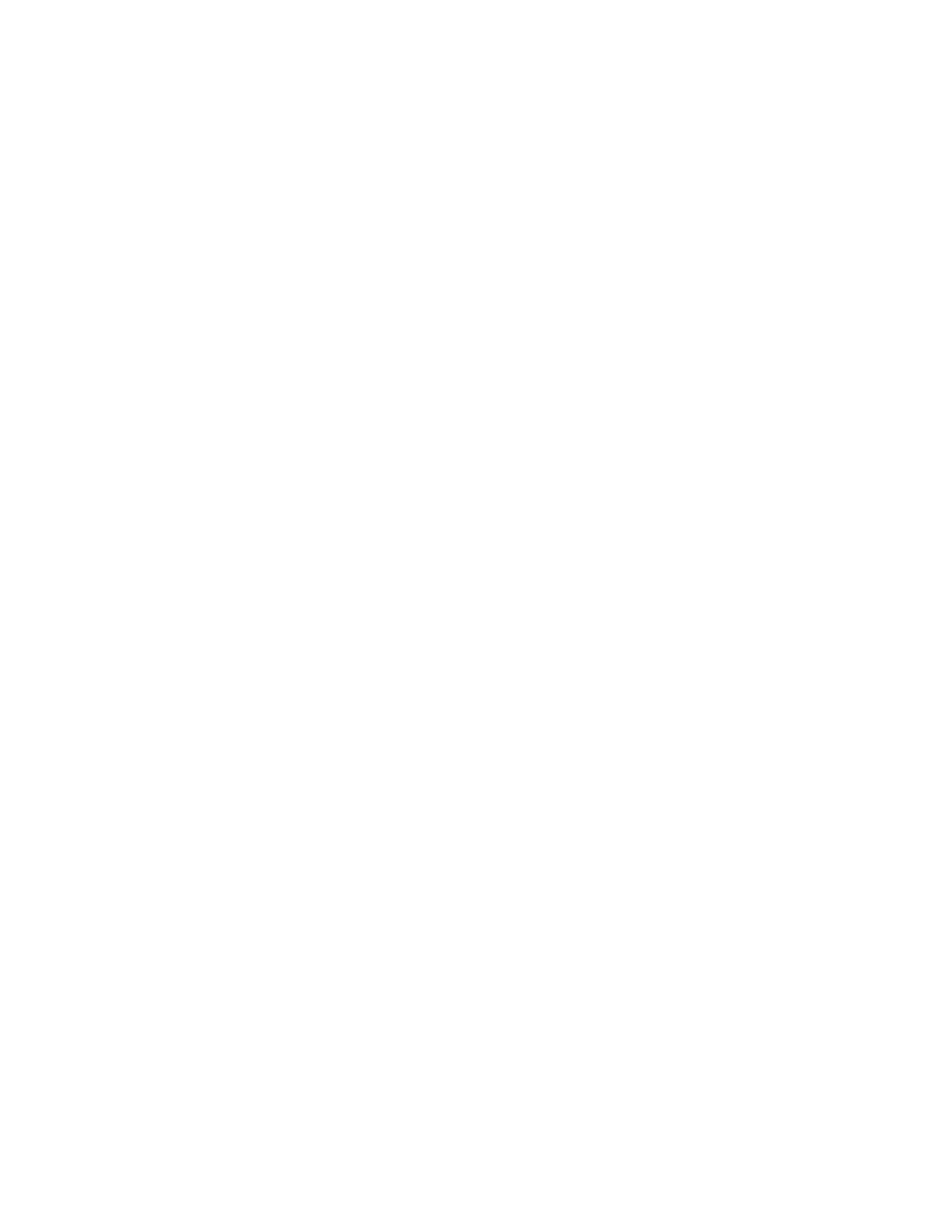244
the data source) for transitions occurring within the setup/hold violation zone. If any occur, the
instrument triggers with the trigger point located at the clock edge.
Positive settings for both setup and hold times (the most common application) locate the
setup/hold violation zone so it spans the clocking edge as shown above in the top waveform. The
instrument detects and triggers on data that does not become stable long enough before the clock
(setup time violation) or that does not stay stable long enough after the clock (hold time violation).
Negative settings for setup or hold times skew the setup/hold violation zone to locate it before or
after the clocking edge as shown above in the center and bottom waveforms. The instrument can
then detect and trigger on violations of a time range that occurs before or one that occurs after the
clock.
Note
Keep the hold-time setting to no more than 2.5 ns less than one-half the clock period (hold time v
(period/2) –2.5 ns) or the instrument cannot trigger (this assumes a 50% duty cycle clock).
Window Trigger
Use the Window trigger to trigger the instrument when the input signal rises above an upper
threshold level or falls below a lower threshold level. After setting these levels, you can specify
whether you want to trigger the instrument as the signal is entering or leaving the threshold
window. You can further qualify the trigger event in terms of time, or by the logical state of other
channels.
Video Trigger
Use the Video trigger to trigger the instrument on specified fields or lines of a composite video
signal. Select from several preset video signal formats or set a custom format. Only composite
signal formats are supported. Graphic display formats such as RGB and VGA are not supported.
Communication Trigger
Use the Comm trigger to trigger the instrument in conjunction with mask testing on
communications codes and standards. The controls work together to define the parameters for the
trigger event. The standards that appear in the Standard drop-down list depend on the coding
format that you selected. The coding format also determines whether upper, lower, single, or clock
threshold levels or pulse forms are used. The standard determines the bit rate.
Sequential Triggering
In applications that involve two or more signals, you may be able to use sequential triggering to
capture more complex events. Sequential triggering uses the A (Main) trigger to arm the trigger
system, and then uses the B (Delayed) trigger to trigger the instrument if a specific condition is
met. You can choose one of two trigger conditions:
Trigger After Time: After the A trigger arms the trigger system, the instrument triggers on the
next B-trigger event that occurs after the trigger delay time. You can set the trigger delay time
with the keypad or the multipurpose knobs.
Trigger on nth Event: After the A trigger arms the trigger system, the instrument triggers on
the nth B event. You can set the number of B events with the keypad or the multipurpose
knobs.
Note

